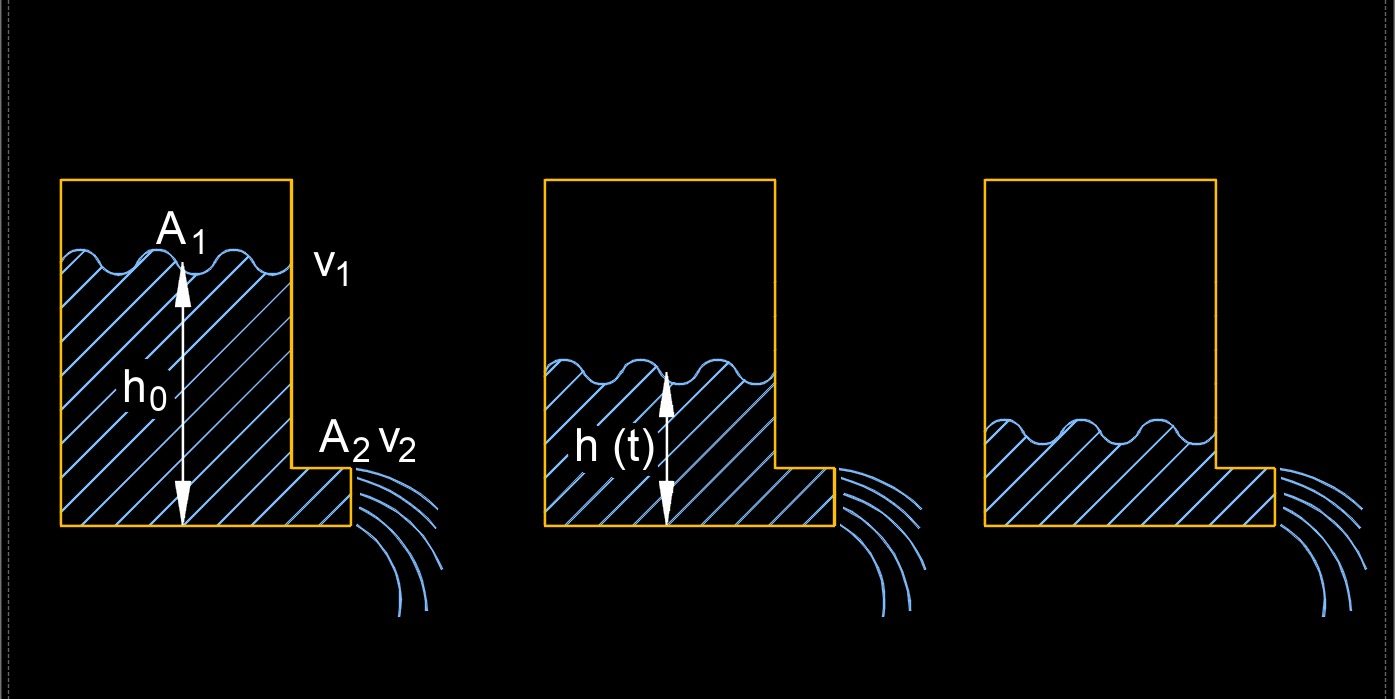Draining a Tank
Time it Takes to Drain a Tank Formula |
||
| \( t \;=\; \dfrac{ A_1 }{ A_2 } \cdot \sqrt{ \dfrac{ 2 \cdot h_0 }{ g } }\) | ||
| Symbol | English | Metric |
| \(t\) = Time to Drain a Tank | \(min\) | \(min\) |
| \( A_1 \) = Tank Area Cross-section | \(ft^2\) | \(m^2\) |
| \( A_2 \) = Area of Outlet | \(ft^2\) | \(m^2\) |
| \( h_0 \) = Height of Liquid in Tank | \(ft\) | \(m\) |
| \( g \) = Gravitational Acceleration | \(ft \;/\; sec^2\) | \(m \;/\; s^2\) |
These formulas for draining a tank assumes ideal conditions and doesn't account for factors like friction losses, turbulence, or changes in pressure over time as the tank drains. Depending on the specifics of your tank and the fluid being drained, more complex formulas might be needed to provide a more accurate estimate.

Velocity to Drain a Tank Formula |
||
| \( v_2 \;=\; \sqrt{ 2 \cdot g \cdot h_0} \) | ||
| Symbol | English | Metric |
| \(v_2\) = Velocity to Draiin a Tank | \(ft \;/\; sec\) | \(m \;/\; s\) |
| \( g \) = Gravitational Acceleration | \(ft \;/\; sec^2\) | \(m \;/\; s^2\) |
| \( h_0 \) = Height of Liquid in Tank | \(ft\) | \(m\) |
The time it takes to drain a tank depends on several factors such as the volume of the tank, the size of the outlet (orifice) through which the liquid is draining, and the height of the liquid in the tank.

